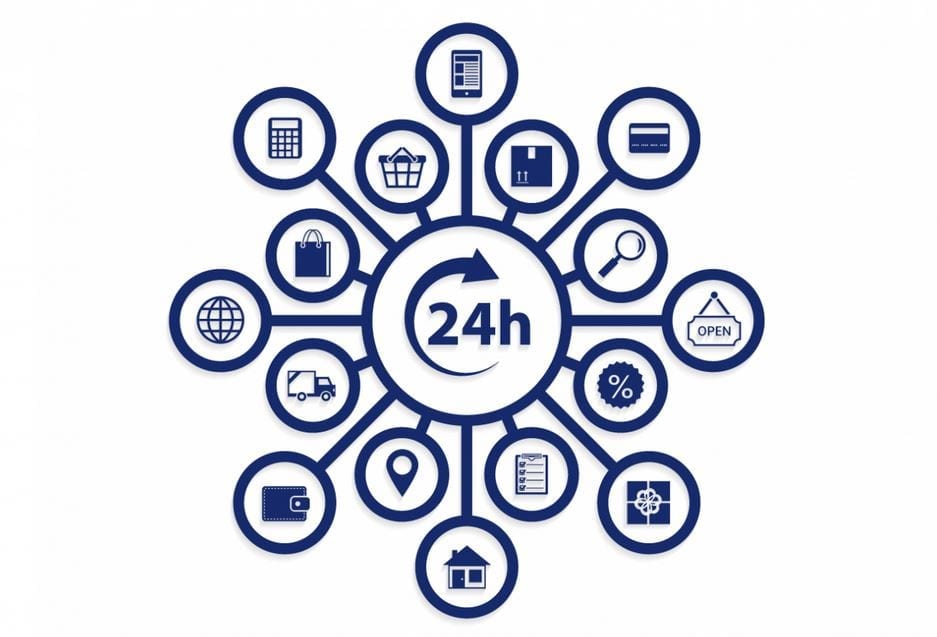This article is brought to you by Invenna CDP
The application landscape is changing continuously and faster than ever. Moreover, the growth of new technology - to solve existing and new challenges - is unprecedented. The challenge for marketers remains to make the right decisions based on a unique and up-to-date customer view. But the complexity of this challenge has increased significantly in recent years, especially due to the growth in the number of (different) touchpoints (channels) through which you as an organization are in contact with your customer. Concepts such as: Dates Warehouse (DWH) and CRM known. Emerging technologies are CDPs (Customer Data Platforms), DMPs (Data Management Platforms, DSPs (Demand Side Platforms) and Marketing Cloud solutions.
But which tooling should you use at what time? And which solution suits the phase of your company or organization? What is the best place to start and what budgets can you or do you want to allocate for these solutions? What does a Best-of-Breed landscape actually look like today? We provide a number of answers to these questions in this article. After reading, you have at least a good picture and concrete tips for some of the most important developments and you can also plot them on your ambition.
Confusion about CDP
Practice shows that in a first orientation a lot of confusion arises about the applications of the Data Warehouse, the CRM system and a (possibly) to be included Customer Data Platform (CDP) and / or a Data Management Platform (DMP).
In the past year, the (former) DMPs have often 'rebranded' themselves to CDP, which does not make it easier for a potential user in the orientation phase.
To make it more tangible which domains a CDP can serve, a new “yardstick” has recently been devised, in which CDPs are assessed on core quality and / or focus area. A core can consist of; Data Integration and data quality, Analytics or Campaign Management. And recently, online personalization may be the fourth to add.
Each of the aforementioned domains has many competitors in the form of standalone solutions that solve challenges at these levels. Think of ETL software, Analysis packages and Email software. Although it is understandable to create some form of guidance, it is a pity that CDPs are placed at a certain angle due to this classification. In my opinion, the added value of a CDP is that this software solves multiple challenges, from the creation of a unique customer image, to insights into the customer, on- and offline campaign management.
Complexity in Marketing Technology
Isn't that very complex? The answer to that is indeed “yes”, at least when it comes to the complexity of building and maintaining such a software solution. And perhaps that is why there has been an explosion of companies that have embraced the term CDP. After all, the label gives the feeling that the vendor can help (potential) customers in a very broad domain. This also means that one “CDP” can be used after a simple pixel has been placed on your site, while the other CDP has an implementation period of several months. And of course there is a huge difference in the ultimate ambitions that are resolved. Placing a pixel can help optimize your online customer journeys, but does nothing at all when it comes to connecting all your data sources and creating a unique customer view. This example may well indicate that it is essential to be very clear about what you would like to solve before you talk in a generic sense about purchasing a CDP.
Sources & channels
Every marketer has a (data) source, usually many sources, to draw from. Data from sources is used for analyzes, reports and - of course - for communication. Email, telephone, mobile and websites are often used channels. One of the most important basic conditions for consistent and relevant communication is that you can use all your knowledge of your customer. What preferences and needs does he or she have, what behavior, for example in the area of website visits and transactions, I observe and through which channels can or may I communicate with my customer.
The most common barrier to using this essential knowledge is the fact that people work in silos. There is no central, unique and current customer view. Online marketers work from email applications and / or a CMS, analysts work on the Data Warehouse and communication retrieves knowledge and data from CRM. Removing these barriers is one of the main - perhaps the most important - reasons for the very rapid growth and increasing popularity of Customer Data Platform technology.
Best of Breed
Once it is clear that the Data Warehouse and CRM domains really serve a different purpose and really offer different solutions than applications such as the Customer Data Platform, the Data Management Platform or a Marketing Cloud, the next phase is to resolve the differences and similarities between those clearly identify three solutions.
It will become clear that a CDP is a crucial part of a future-proof and unique customer image. A DMP can provide interesting added value, especially if you have multiple websites and your business is primarily online. A Marketing Cloud is a substitute for a number of (online) channels, but does not fulfill a connecting role in the same way as a CDP or a DMP can do.
The choice for a Marketing Cloud solution is often a choice based on convenience, where (limited) flexibility and (higher) costs weigh less. In practice, it can be seen that more and more organizations are opting for a “Best of Breed” attitude. Individual applications for (e) mailing, mobile and website (s) are controlled directly from a CDP, with the important advantage that it is easy to move with the speed of current developments and that there is no "vendor lock-in" on a whole. domain.
But also a Marketing Cloud and / or a DMP are regularly controlled from a CDP. In this respect, both can be seen as (a combination of) channels.
Maturity & choice
Each organization is in a different phase of maturity, has different ambitions and its own strategy. The common thread shows that data will play an increasingly important and - very likely - decisive role in the degree of success and future-proofing. Relevant communication, with the right message, via the right channel, at the right time is a precondition. Just like complying with increasingly strict laws and regulations, such as the GDPR (AVG) and guidelines from industry or professional organizations. Making (the right) choices in a continuously changing and rapidly innovative technological environment is a challenge. At the same time, more and more applications are coming into line with this in the form of a “Best of Breed” solution. They ensure that the core purpose of the relevant application is perfectly fulfilled, but at the same time give sufficient flexibility to adapt the surrounding applications to the latest developments. Connectivity is therefore a key word, which should at least be at the top of every list of requirements and wishes.
Another important milestone is also the realization that the basis must be in order before various channels and technologies can be connected and used optimally. A unique and up-to-date customer image, easily accessible to marketers and thus the opportunity to make the best decisions based on your customer's knowledge, are examples of such a basis.
Do you have questions about this blog entry? Feel free to send us your message Contact














